As an Amazon Associate I earn from qualifying purchases.
Korean green onion kimchi might be my favorite variety of this powerfully flavored condiment/vegetable.
And for a wild foods guy like myself, making green onion kimchi couldn’t be easier considering how many wild onions grow all over the country.
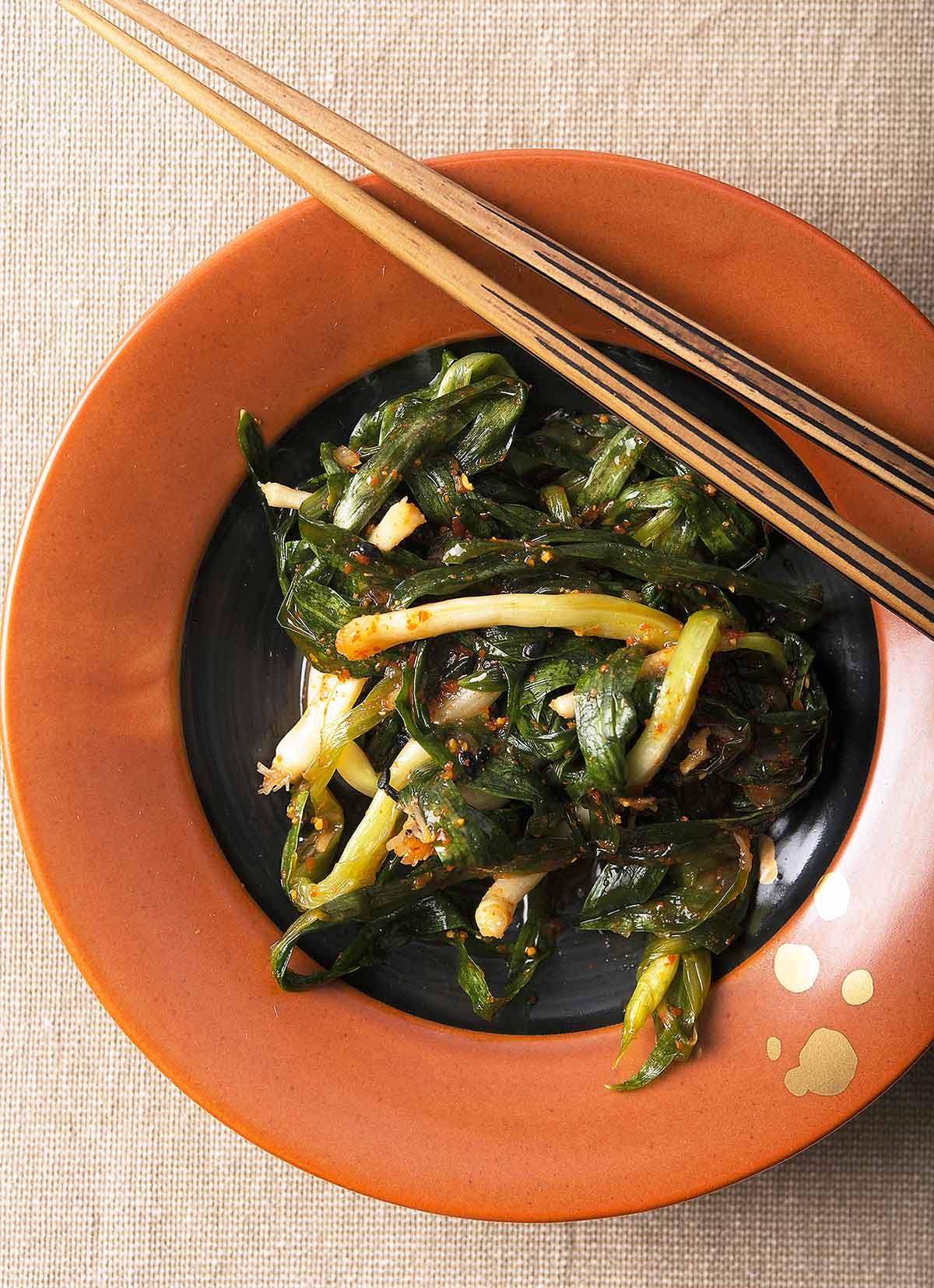
I’d always been a little nervous about making kimchi, which is to Korea what sauerkraut is to Germany. Kimchi, if you’ve never eaten it, is essentially the national dish of Korea, is eaten with everything and comes in myriad forms.
Every Korean I’ve ever met is a self-described authority on kimchi, much the way Italians are with pasta or the way New Jerseyans and New Yorkers are with pizza and bagels.
So it was with great trepidation that I served my friend Helen Lee some of my homemade green onion kimchi some months ago. When she ate it, her eyes widened. “Wow! This is really good! It actually has the kimchi aftertaste!”
Helen explained that good kimchi is fermented for quite a long time, and it develops a particular aftertaste, as well as a slight fizziness from the ferment. This is what separates “real” kimchi from kimchi-flavored crap, she said.
Buoyed by Helen’s vote of confidence, I made more kimchi. What is it, you ask? Well, it is a vegetable of some sort — usually cabbage, daikon or green onions — fermented with salt, soy or fish sauce, garlic, ginger and LOTS of chiles. It sits around for anything from a few days to a year, melding flavors and generally doing its microbial thing.
When you eat it, kimchi is a nuclear bomb of flavor. Pungent, picante and powerful all at once. A little goes a long way. Unless you are Korean, in which case you can eat tubs of the stuff.
I like green onion kimchi next to bland foods like steamed rice, simply cooked meat and fish — especially bass and catfish — and in kimchi dumplings. It’s really good with bulgogi, that other national dish of Korea, too.
Koreans use scallions or other green onions, which you can of course use, but I prefer to use wild onions like ramps, the Sierra wild onions we get at high elevations, or three-cornered leeks, which are an invasive species around these parts.
Everyone reading this has some sort of wild onion living near you, so give this recipe a go this spring. It will be ready right when you break out the grill.
Wild Green Onion Kimchi
Ingredients
- 1 1/2 pounds green onions
- 1 cup kosher salt
- 6 cups water, divided
- 2 tablespoons rice flour
- 1/2 cup fish sauce
- 1/4 to 1/2 cup cayenne or Korean chile powder
- 2 tablespoons sugar
- 1 tablespoon sesame seeds
- 3 tablespoons minced garlic
- 2 tablespoons minced ginger
Instructions
- Make sure all the green onions are clean. If the tops have not been trimmed, cut off about 1 to 2 inches of the top green part, which is very stringy. Dissolve the kosher salt into 5 cups of water. Soak the green onions in the water for 1 hour.
- Meanwhile, bring the other cup of water to a boil and whisk in the rice flour. Turn off the heat and keep stirring until the flour is totally incorporated into the water. Let this cool while the onions soak.
- When the rice flour mixture is cool, mix in the remaining ingredients and put everything in a very large bowl or a rimmed baking sheet.
- Take each onion and, if you want, wrap the green end around the white part to make each onion more compact; most Korean recipes do this. Alternatively, you can chop them coarsely.
- Put on some latex or rubber gloves if you have them, because you're gonna get messy. Mix the onions with the spice mixture so they are completely coated, then cram them into quart Mason jars. Leave about 3 to 4 inches headspace. You can take your gloves off now. Find a smaller jar or some sort of clean weight -- I used narrow jelly jars -- and fill it with water. Use this smaller jar to weigh down the kimchi in the Mason jar so it is totally submerged. Let these jars sit in a cool, dark place (cool room temperature is perfect) for at least 3 days, and up to 2 weeks.
- To store, remove the smaller jars and redistribute the kimchi into wide-mouth pint jars. Cap and refrigerate for up to 6 months.
Notes
Nutrition
Nutrition information is automatically calculated, so should only be used as an approximation.

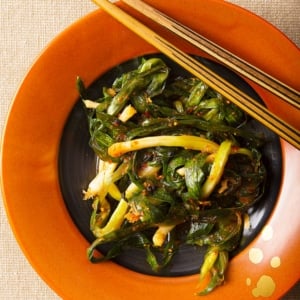

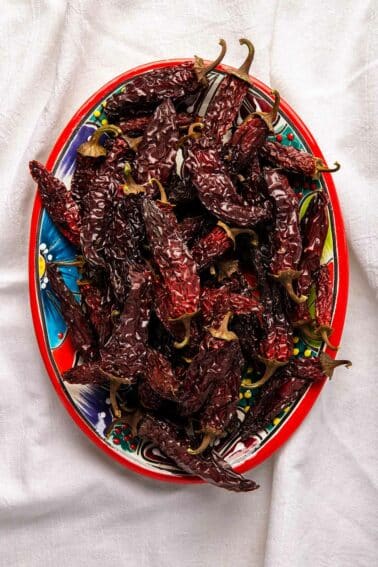
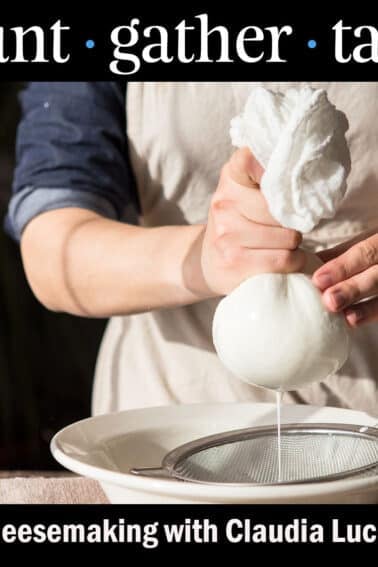
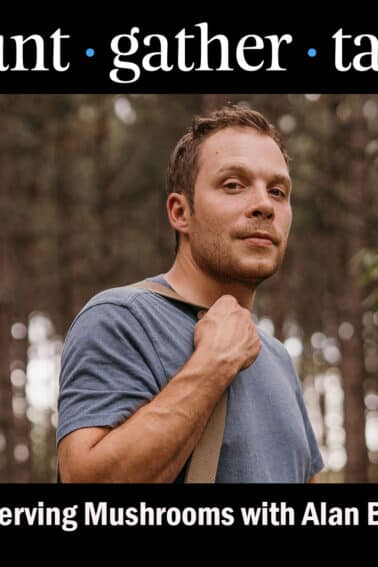
I was so excited to make this with a huge batch of three-cornered leek, which is invasive where I live, too.
However, I had to toss everything. It was way, way too salty, completely inedible. Next time I will definitely rinse after soaking!
Hi there,
I’m wondering if you rinse the ramps to remove the salt water before mixing in the spice mixture and letting them ferment?
Thank you!
Douglas: No, I do not.
Me again. If you use the button in the upper right of the recipe to make 3X the recipe, then double that (use 9# of ramps) you will fill 2- gallon jars to 3″ from the top. That is enough to last me a year and give away to my friends and family. Adding to egg dishes like quiche and frittatas and pho are our favorite uses.
Hi Hank, I was wondering if the jars of kimchi should have lids on them while fermenting, or if I should leave the lid off, or slightly unscrewed?
Thanks!
Tamara: I put an airlock lid on the jars. You can also just barely screw on Mason jar lids, just enough to hold, but still loose enough to off-gas if pressure builds up.
Hi Hank,
I’m trying out your recipe to use up wild garlic that is growing everywhere at the moment. The recipe says that the leaves should be submerged in the liquid once all the leaves are coated in it. However I don’t have enough liquid to actually submerge the leaves. They are just thoroughly coated in it. Do I add more mixture or am I getting something wrong?
F: I would make a brine of 1/4 cup kosher salt to 1 quart water (that’s the ratio) and use that to submerge the leaves.
Hi Hank,
I should’ve waited a day or two before commenting here as the wild garlic released plenty of water once coated in the kimchi seasonings. I tried the kimchi today and it is absolutely delicious! Thank you for a wonderful recipe.
In lieu of fish sauce, I used some of last years black walnut ketchup, which contains anchovies. It’s only been a day, but there doesn’t appear to be any fermentation happening. I’m using an air lock. Was the black walnut substitution a mistake?
Kathy: Yep. Because walnut ketchup has lots of vinegar. That changed the pH of the mix and is the likely culprit.
Hey Hank,
If I make this with ramps, should I just use the whole thing?
Jesse: I would.
This is delicious, better than any kimchi I’ve had. I used a combination of ramps, cabbage and carrots, keeping the total measure of veggies the same 1 and 1/2 lbs and the rest of the ingredients as written. A week of fermentation made it just right.
I made a gallon of this last year and fell in love. It’s wonderful with eggs. Ramps should be popping here soon and I need 3X as much this year.
Hi Hank, I just wanted to thank you for this recipe. I’ve made a lot of kimchi over the years – I used to cook at a Korean restaurant – and this is now my go-to recipe. Enjoying the podcast too. Keep up the good work.
hi hank: i just want to be sure: do i throw away that 5 cups soaking water+cup of Kosher salt? or am i incorporating it all in? (seems like a lot of salt to ferment with!)-
thanks
Johanna: You toss it.
wonderful-thanks! We eat these 3-cornered onions all late winter because they grow copiously here in my pasture; they don’t really have a strong flavor though, so i try to use them as raw as possible. i think kim chi will be a good way to use them as their flavor will come out more.
I have tried the recipe. I live in Malaysia and we have plenty of these wild onions here. Very flavourful and goes well with bland food like fish. Love it. Thanks for sharing the recipe.
What about using garlic scapes?
Tim: That’ll work.
Wow this is an old post and I’m surprised I’ve never needed it before! What’s the point of the rice flour? I’ve never used that in any of my other kimchis, including other young allium kimchis, but ??
Lauren: The rice flour provides food for the good lactic acid bacteria, making the kimchi funkier and a little more sour than it would be if you left it out. It is a traditional ingredient in many kimchi recipes.